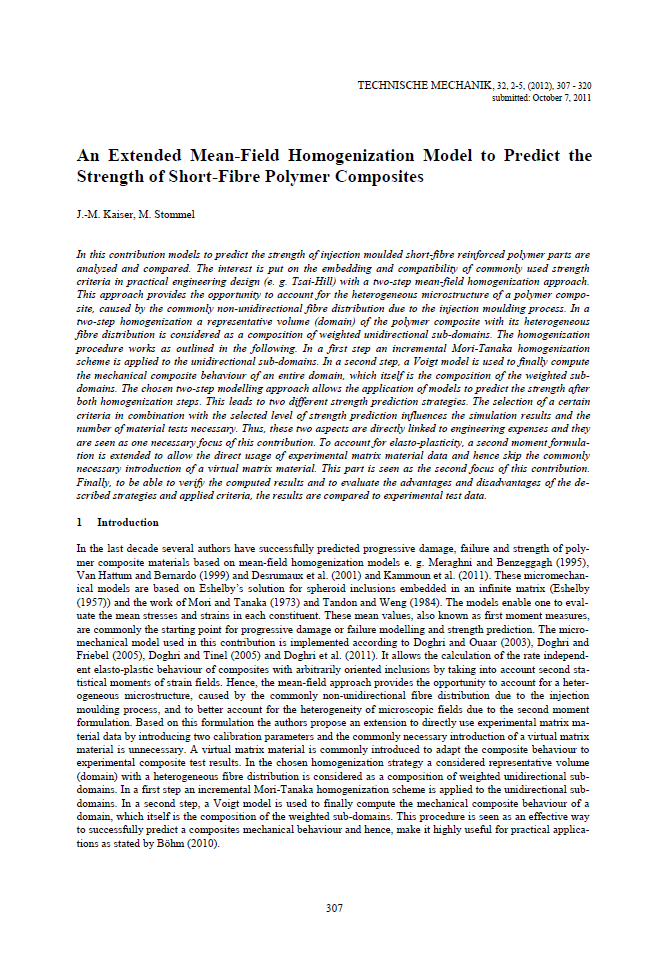An Extended Mean-Field Homogenization Model to Predict the Strength of Short-Fibre Polymer Composites
Abstract
In this contribution models to predict the strength of injection moulded short-fibre reinforced polymer parts are analyzed and compared. The interest is put on the embedding and compatibility of commonly used strength criteria in practical engineering design (e. g. Tsai-Hill) with a two-step mean-field homogenization approach. This approach provides the opportunity to account for the heterogeneous microstructure of a polymer composite, caused by the commonly non-unidirectional fibre distribution due to the injection moulding process. In a two-step homogenization a representative volume (domain) of the polymer composite with its heterogeneous fibre distribution is considered as a composition of weighted unidirectional sub-domains. The homogenization procedure works as outlined in the following. In a first step an incremental Mori-Tanaka homogenization scheme is applied to the unidirectional sub-domains. In a second step, a Voigt model is used to finally compute the mechanical composite behaviour of an entire domain, which itself is the composition of the weighted subdomains. The chosen two-step modelling approach allows the application of models to predict the strength after both homogenization steps. This leads to two different strength prediction strategies. The selection of a certain criteria in combination with the selected level of strength prediction influences the simulation results and the number of material tests necessary. Thus, these two aspects are directly linked to engineering expenses and they are seen as one necessary focus of this contribution. To account for elasto-plasticity, a second moment formulation is extended to allow the direct usage of experimental matrix material data and hence skip the commonly necessary introduction of a virtual matrix material. This part is seen as the second focus of this contribution. Finally, to be able to verify the computed results and to evaluate the advantages and disadvantages of the described strategies and applied criteria, the results are compared to experimental test data.





